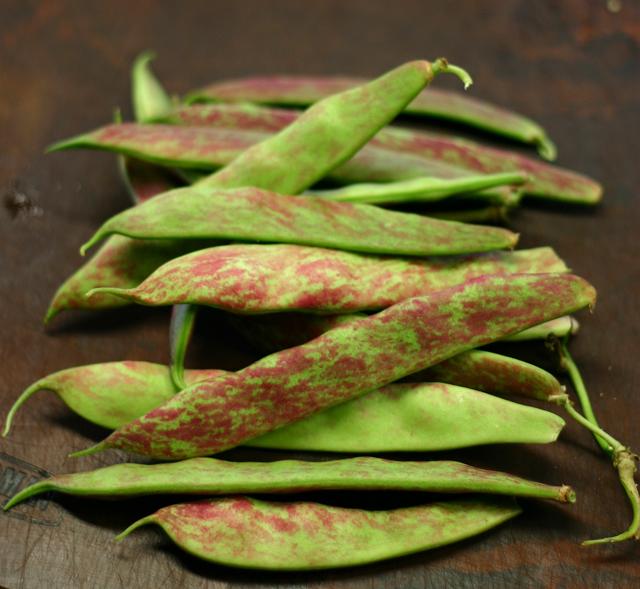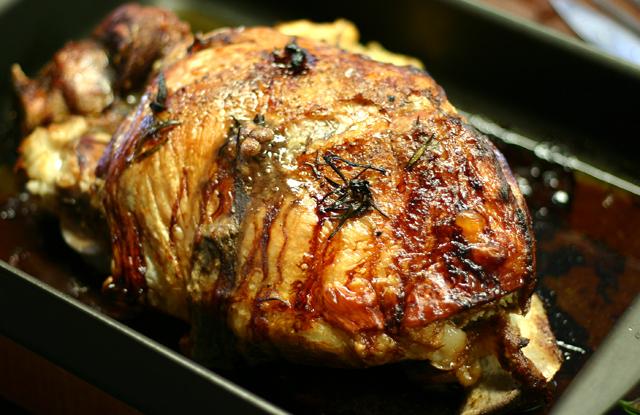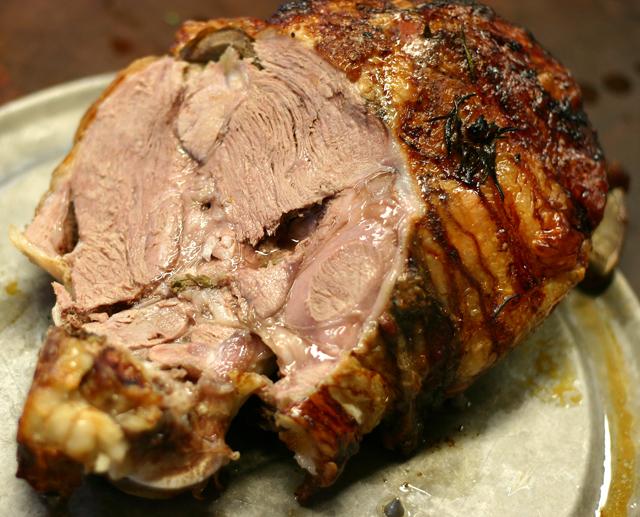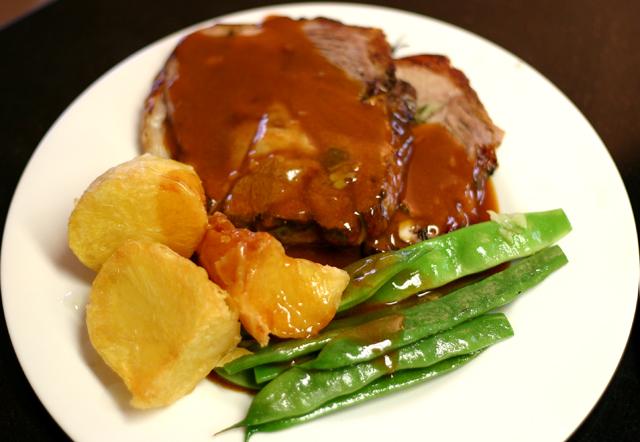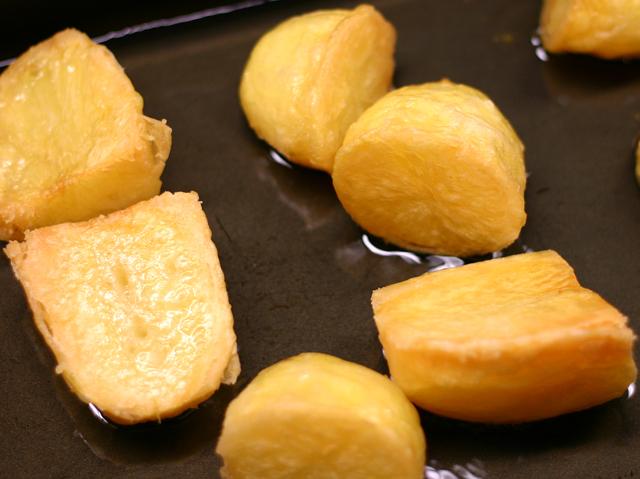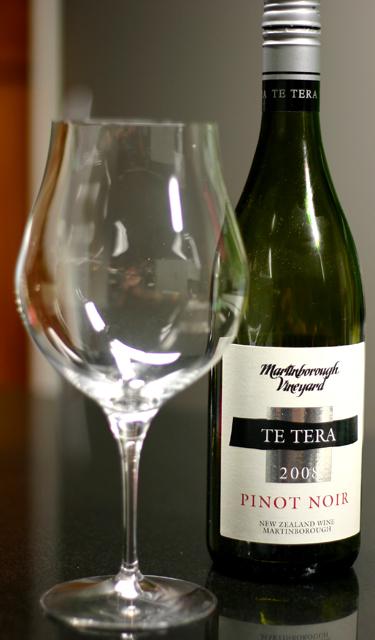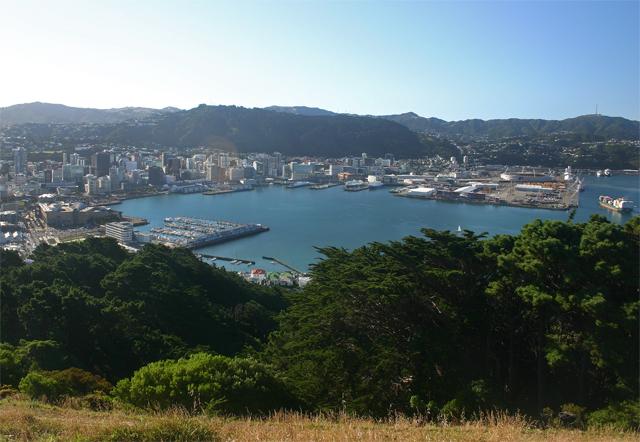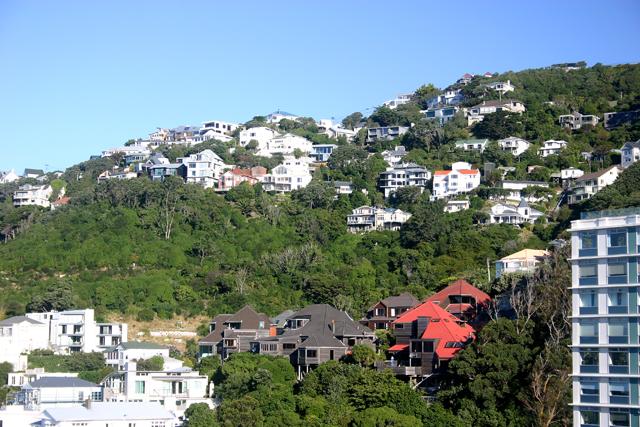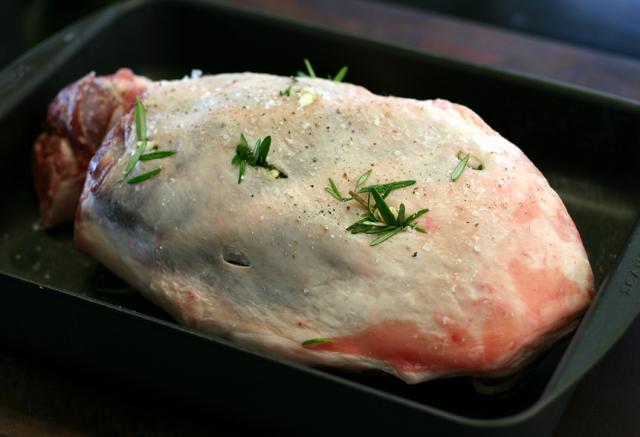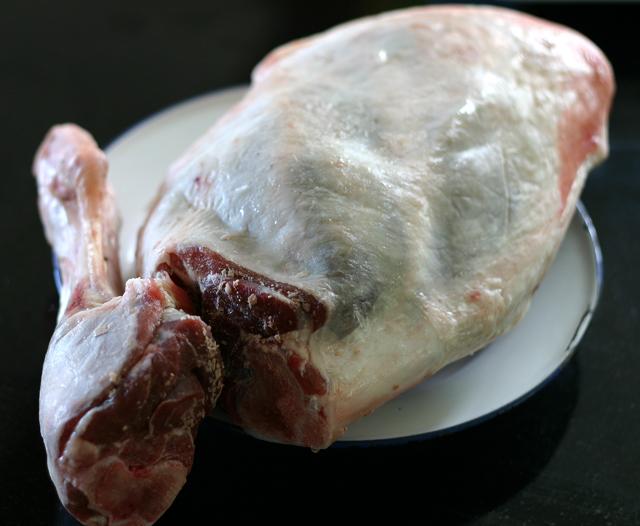-
Posts
1,664 -
Joined
-
Last visited
Content Type
Profiles
Forums
Store
Help Articles
Everything posted by lesliec
-

eG Foodblog: lesliec (2011) - Beef, boots and other stories
lesliec replied to a topic in Food Traditions & Culture
Hi all. Just back from over the hill, and I am now (slightly more of) an expert on how to make gin. Watch out Bombay Sapphire - but I'll probably write that up for you tomorrow. First a couple more answers, tyhen separately I'll tell you (finally) about the City Market. By the way, thanks for all the questions. I'm really enjoying finding answers for the ones I can't handle off the top of my head. Peter, glad it was the path and not your searching skills which gave me away! My choice for LOTR is the extended version of all three. Each is 45-60 minutes longer than the theatrical releases, but what they add to the richness is worthwhile. A nice sound system (with big subwoofer) helps. Re the various meats: I'm guessing, but I suspect chicken might top the list. What the order of popularity of pork/beef/sheep would be I really can't say. No, the roast leg probably isn't the most common form (but it's nice!); you can have steaks, rump, chops, racks, etc. for something quicker to prepare. Lamb is one of the meats sous vide is particularly kind to. We do get mutton, but it's not as common as lamb; there's also hogget (if I remember correctly, technically that means it's two years old) but that seems even more rare in recent years. As with almost anything, older = potentially less tender but tastier, so it's worth looking out for hogget or mutton when it's available. Heidi, screwcaps have become very common here. You're possibly familiar with the arguments for and against; one that's often advanced here is that our wines tend to have very fresh fruit flavours which a screwcap does nothing to spoil. Some of the winemakers have experimental batches of their older wines using both types of closure (not in the same bottle - you know what I mean) and seem happy that wines under screwcap do stay fresher longer, with no adverse effect. Against that is the argument that wines meant for aging benefit from the small amounts of oxygen a cork lets through. Basically, on one side you have wines which will taste more or less the same in five years as they do now, compared to ones which will change as they age. I'm still undecided, I confess. A screwcap is undoubtedly quicker to get off, but it's still kinda nice to wield a corkscrew. And I haven't had any problems with cork taint. Erin: you'll have plenty of choice. Have fun, responsibly! -

eG Foodblog: lesliec (2011) - Beef, boots and other stories
lesliec replied to a topic in Food Traditions & Culture
OK, I've decided I'd better not go to bed this week - there's all these responses to the blog when you wake up! So ... one at a time, I guess: Nick: The Bluff oyster season starts in March, so not too far away. For years I prefessed not to like oysters, then two years ago I was force-fed (nearly!) a specimen which changed my mind. Not a Bluff one; this was from Waiheke Island, near Auckland. Since this epiphany, if that's the right word, I haven't yet tried a Bluff one but I guess I should. Kayb: Thanks. The tour starts in earnest in about an hour when we start the drive to to see how/where gin is made. More views as we go through the week, promise. Chris A: I hope I won't destroy your good sterotypes (don't think so - we have some lovely products). I'm quite impressed that I can use the phrase 'local gin distiller' myself! No, it's not South (had some of that last year and was underwhelmed). Wait and see (I used to HATE my mother telling me that was for dinner!). Erin: By all means hit the supermarkets, but also try to find time to visit Kapiti's shop in Auckland (go here and click 'Stores'). Then you'll get both ice cream and cheese - can't miss! As for your Sauv Blanc cloud ... we can certainly provide the wherewithal. Marlborough is I suppose most famous for it, and the style is very much big, upfront fruit (which has, of course, been likened to cat's pee on a gooseberry bush). If you can, look out for the less common ones from Hawke's Bay or Martinborough; they're a bit more rounded and complex. Hawke's Ridge is a particularly good one I've tried recently. Helen: The gas just wasn't doing it for us (and I've been a gas fan for years). It wasn't fast, it wasn't fierce when I wanted it, it wasn't controllable - you know, all the things gas should be. The induction went in two days before Christmas (bravery/madness) and we're stunned at how good it is. Linda (and Linda's nephew): Hi. Yes, if you want fresh and good, it's available. Surprisingly, this hasn't always been the case, but we've really improved the products available to us ordinary shoppers. I'm hoping to get my City Market visit written up later today for you, and I have an appointment tomorrow morning to chat with one of the owners of probably the most influential food retail development of the last few years. Time to go now. I'll be back later with a haze of gin surrounding me. Possibly. -
Intriguing, Chris - looking forward to seeing the results. Noting your comment on the stiffness; would it work satisfactorily in a mixer with a dough hook, would you think?
-

eG Foodblog: lesliec (2011) - Beef, boots and other stories
lesliec replied to a topic in Food Traditions & Culture
Hi Harry. Nice to hear from a fellow Wellingtonian and (clearly) Pythonian. Where are you - central, north, south, Hutt, ... ? Yep, food sources coming up soon. Stay with me - so many places, so little time. -

eG Foodblog: lesliec (2011) - Beef, boots and other stories
lesliec replied to a topic in Food Traditions & Culture
To conclude the roast lamb topic ... it came out looking like this: And inside: It's fine like that, but if my time machine was working I might have taken it out 20 minutes earlier. Ah well. I’m a great believer in crunchy roast potatoes to accompany roast meat. The best way I’ve found to achieve this is to boil the spuds until they’re done, then drop them into hot duck fat an hour before I want them. Totally overcooked, totally good. And to accompany, some fresh beans from the garden. Until quite recently these guys were still growing. All they need is a quick blanch in boiling, salted water, then a toss in butter and fresh garlic. As you'll see shortly, the red pigment vanishes when they're cooked. And to finish, gravy is essential. My roasting pans don’t work on induction, so since I changed from gas I’ve had to amend my gravy-making technique. And it’s worked out better than I ever managed before. After I’ve put the meat aside to rest, I pour off most of the fat, slosh some stock into the pan and scrape up the nice brown bits. I’m using a Campbell’s chicken stock tonight; these prepared stocks arrived in our supermarket a year or two ago and I find them really good. But when I have my own stock I use that. That goes into an induction-friendly pot to heat up, while I make some flour and water paste for thickening. I’ve got into the habit of using stock for this too, but plain water is fine. Into the pot, stir and heat gently. One of the particular delights of induction is its controllability. Once the gravy is up to temperature I can wind the heat way down so there’s just the odd bubble climbing slowly to the surface. It can stay like that for hours ... And now we serve: Since the meat came from the Wairarapa it seeme only fair to drink a Wairarapa wine with it. They’re making some lovely Pinot Noir over there; this is the second lable of Martinborough Vineyard. I must confess the two Chrisses have got me interested in hyperdecanting, so I tried it with this one. Yes, it does make a difference. Is the result better than if you hadn't done it? Very fair question. Cheers! To finish off Jane made a quick dessert with some market peaches, some of my cinnamon ice cream, some berries from the garden and a little raspberry sauce she made a while ago from some on-the-point-of-no-return raspberries, also from the market. Perfect. Off to bed now; I'll be back on Monday morning with some more. -

eG Foodblog: lesliec (2011) - Beef, boots and other stories
lesliec replied to a topic in Food Traditions & Culture
Mr Reynolds, if you have trouble with wind in Wellington, you're going to the wrong restaurants. I shall be very happy to recommend alternatives. -

eG Foodblog: lesliec (2011) - Beef, boots and other stories
lesliec replied to a topic in Food Traditions & Culture
Hi Helen. Welcome back to NZ, and I shall disdainfully ignore your slur on Wellington's weather, except to say this: and this: Your post came in as I was writing that previous one, so I suspect you may now be drooling over your keyboard at the thought of what I'm doing to that lamb. And yes, Rush Munro's certainly has a following, but to my taste Kapiti is better (fig and honey - ahhh). Then there's Kohu Road, with some deliciously unusual flavours (Golden Syrup, perhaps). But that's entirely moot now I've started making my own, of which more later in the week. Yes, Welly doesn't have quite the numbers of Asian immigrants that Auckland has, but there's still some very good Asian food to be had out there. So I'm told. When I posted last year about a dinner at Martin Bosley's you mentioned it might be a good idea to send son here. Stay tuned for tomorrow night ... -

eG Foodblog: lesliec (2011) - Beef, boots and other stories
lesliec replied to a topic in Food Traditions & Culture
Thanks, Heidi. I hope I'll be a smooth driver, but the seatbelt is always a good idea (I'll show you the road I have to go over to get to the gin distillery tomorrow!). I've just finished getting tonight's lamb ready for the oven. The previous owner of this particular piece was born and raised in the Wairarapa region, just over the hill from Wellington, by my colleague Phil, who has a small farm near Masterton. You’ll note this leg has a good layer of fat, which distinguishes it from the export version (why should you guys get all the good stuff?). As it cooks the fat is going to ooze down over/through the rest of the meat, leaving it juicy, tasty and brown and contributing to some rather superb gravy. Hmmm ... maybe I need to add something to the Roasts topic in WikiGullet ... Preparation is simple. There’s nothing wrong with just sprinkling some salt over the top, but I’m going for rosemary and garlic inserted in holes poked in the meat with a sharp knife, then salt and pepper. If you don’t have that good fat layer, a slurp of olive oil doesn’t hurt as well, but I've decided to do this one 'natural'. Our oven has a ‘Roast’ setting which gives the meat a high-temperature browning before settling down to a more reasonable temperature, but this cut works pretty well at around 160°C for the whole cooking time - you just don't get quite as much nice browny stuff for the gravy. Of course, you can do it manually - say 220°C for the first 10 minutes, then drop to 160 - but that involves thought, and memory! I’m going for a slightly-pink centre, which should take something like 2½-3 hours (internal temperature say 65°C). And here it is, ready to go: -
[font="Trebuchet MS"]Hi everybody. Welcome to what we believe is the first eG foodblog from New Zealand. Due to time differences it’s a little late in the day now for me, but shall we start with some breakfast? Those are from Joanne Harris and Fran Warde’s book [amazon=0060893133]The French Market. The only change I make is to omit the egg wash – I find it gives a slightly ‘wrong’ taste; bitter, perhaps. And I have no trouble getting them brown enough (apologies for these ones – they’re slightly more brown than I’d like. That’s what happens when you put them in the oven just as you’re serving dinner, then forget …). I usually make a batch and freeze them; then they’re available at a moment’s notice when breakfast calls. I hope I can satisfy the anticipation you displayed in your reaction to the teaser photos. It’s going to be an interesting week for me, anyway. Shortly I’ll tell you about the City Market here in Wellington, where we’ll meet some very dedicated food people. Tomorrow we’re visiting a local gin distiller, and I’m taking you all to Valentine’s Day dinner (don’t read too much into that!) at my absolutely favourite Wellington restaurant - we’ll meet its chef at the market, just to get you in the mood. We have people coming to dinner on Wednesday (which is unusual, but I’ll manage it somehow), so you can sit in on that for a classic, if maybe predictable, dish (any guesses?). At some stage I’ll take you to a few of my favourite Wellington food shops, and next Saturday, weather permitting, we’re having a picnic with some of my work people – I have some very traditional New Zealand food planned for that. And there’ll be a few other bits and pieces thrown in as we go. Just as well I’m taking the next couple of days off work – I don’t think I could cope otherwise! Finished your croissants? How about some coffee before we go? Yes, Peter, I made one for you. While you’re enjoying that, let’s get some of the dry, factual stuff out of way, shall we? New Zealand is that funny-looking little group of islands way down at the bottom of the South Pacific (no, not that far down – that’s Antarctica). The two largest islands are imaginatively named the North and South Islands. Important note: if you’re ever talking about them, it’s always THE North Island or THE South Island – don’t forget the definite article. There’s also the West Island where Nick (nickrey) lives, but we won’t say too much about that. Wellington is the capital city and is at the bottom tip of the North Island, near enough to the geographical centre of the country. Greater Wellington has a population of 370,000 or so, of which Wellington City itself makes up around 180,000 (New Zealand’s total population is somewhere around 4.5 million – roughly the same as Sydney. Or Boston, apparently). The New Zealand dollar is worth around $US0.76 (or, to put it another way, $US10 buys $NZ13), and any measurements you see in the photos will be metric. Our time zone (we have an hour of daylight saving in effect at the moment) is 12 hours ahead of Europe, 18 ahead of California and 21 ahead of New York – that’s if my amateur time calculations are to be trusted. 10am here is 1pm yesterday in LA, anyway. This creates some difficulties doing a blog like this; I’ll try to make it sound like real-time, but in fact I’ll be well and truly shut down and in bed before many of you start thinking about reading it. Ethnically we’re quite a mixture. Most of us – it’s hard to say how many; the census figures are complicated by people claiming multiple origins – are of European ancestry – we have English, we have Greek, we have Irish, we have Italian – you name it, they’re here! The rest of us are of Maori, Pacific Island or Asian descent, with plenty of cultural mingling. That does make for an interesting food landscape, although I must confess up front: my palate leans very much towards Europe. I can’t help it; Asian tastes just doesn’t do it for me. Partly in recognition of this, our dinner tonight is going to be as traditionally New Zealand as it gets. I'll get that in the oven a little later and show you how it turned out - probably tomorrow (my time). A technical note, for those who are interested: the photos were taken using a Canon EOS 300D, most commonly with a 50mm f1.8 lens. I bought the lens, a fairly inexpensive one, specially for this blog and I can thoroughly recommend the joys of a fast lens for food photography. And yes, we must mention the teaser photos. I suspect there may be the odd smartypants out there who can use Google, so the quote in the second one probably wasn’t as hard as it might have been. But just so everybody knows: This one, I grant, could be anywhere. In the foreground are some nibbles I make for almost every dinner party we have. They're a very simple El Bulli recipe; peeled cherry tomatoes and balls of watermelon, separated by a basil leaf. The ones in the photo are shown not-quite-finished - there's a drizzle of basil oil and a sprinkle of salt and pepper to come. In the background, a loaf of the bread I make from the subject of this thread, and very good it is too. This one is part of the Wellington Writers' Walk along the waterfront. The quote is from a poem by Bill Manhire, who among other things teaches creative writing at Wellington's Victoria University. This one is over the roof of our house, looking towards Evans Bay. The airport is in the middle distance towards the right. It's often said here that you can't beat Wellington on a good day. This was one. And this one gets the obligatory Lord of the Rings reference out of the way. Remember the part in the first film where the hobbits are hiding from the Black Rider? That was filmed on Mount Victoria, in these very trees, maybe half a kilometre from home. Enough already. Let’s go to the market.
-
Lovely project, guys - well done (and thanks for wasting the rest of my life ...). It doesn't like me adding an image. I click the 'Image' button in the rich text editor and all I get is the 'busy' mouse pointer when I'm on the toolbar. I can still do other things on the page (like editing text) but I never get the opportunity to select an image and publish it. This persists for several minutes, until I give up and go somewhere else. PC, Win 7 Pro, IE8.
-
I bow to the far greater knowledge of them as has hot dogs as part of their local food culture (not big here at all, so I have no idea what constitutes a good one), but I'm reminded of recent discussion in the sous vide topic about SV-assisted Beef Wellington. The principle, we agreed, was to cook the meat first in order to only have to worry about getting the pastry nicely brown and puffy. Same thing might apply here; if the internal sausage-thingy is already more or less how you want it, then wrap it and cook it fast and hot to crisp up the bacon.
-
A while back Martin of the wonderful Khymos posted this story about glowing lollipops. Don't think it's going to help you much, but they're certainly pretty.
-
Stop press: I was talking to my mother last night; Gibb's has had a fire. Their website doesn't say anything about it, but here's an item from the local paper. They may be able to arrange alternative premises, but I wouldn't count on them being up and running any time soon. Pity - I didn't know about them, but the reviews look good.
-
I haven't been down to Queenstown and Chch recently, but I can certainly help with Blenheim and Wellington. Your wine tour may take in Alan Scott's and Hunter's in Blenheim, but if not they're both reliable. I don't think Alan Scott is open for dinner (he's great for lunch), but Hunter's is. We had a very nice evening there about three weeks ago - the elderly cat is very friendly! In the centre of Blenheim, try Raupo - good cafe-style food beside the river. I don't recommend Bacchus; its decor and food seem slightly stuck in the 70s. Nothing really wrong with it, but you can do better. That's the extent of my recent dining experience in Blenheim, but since the wine industry moved in the number of cafes and restaurants has blossomed. Top of the scale is Herzog, but I don't have personal experience of it. One day. In Wellywood you have a huge choice. Top of my personal list is Martin Bosley's. Until last week I would have recommended the White House, but we weren't as happy with it last time as we have been before. If you're anywhere near the airport, the suburb of Miramar has two brilliant cafe/restaurants, The Larder and Cafe Polo, both open for lunch and dinner (and probably breakfast!). If you like that sort of thing you might find yourself eating beside film industry types from Peter Jackson's nearby production empire. There's another brilliant suburban restaurant, Elements, not far away in Lyall Bay. In the city (bearing in mind the difference between 'at the airport' and 'in the city' is about 10 minutes), Featherston Street has a row of pubs - Irish and Belgian prodominate. My personal favourite is D4, upstairs on the corner of Featherston and Brandon Sts. One block north (towards the railway station) you'll find Arbitrageur, where we've had some very good dinners. And nearby on the waterfront is the newly-opened Foxglove which, depending on which part of the building you're in, is a restaurant with fantastic food, a pub, or a night club. Courtenay Place is considered the 'entertainment district', but I tend to avoid it - I'm not 20 any more! But it has many more pubs, restaurants and clubs. Just up the road, but much quieter, is Ambeli, which I heartily recommend. A tip: let the young owner Shae choose your wines for you. I've never had better food matches. I could go on (many say I do!) but you may find this link helpful. Send me a PM if you have any specific questions. And enjoy your trip.
-
For many years (30 at least), Il Casino was the Italian restaurant in Wellington for special occasions. A couple of years ago it closed for refurbishment (unfortunately it never reopened and the owner died shortly afterwards - different story). A large bin was placed outside for demolition rubble and other rubbish. My wife and I happened to be passing one night and noticed a couple of people pulling something from the bin. After they'd gone (well, you can't be seen to be doing something like this, can you?) we went and had a rummage of our own. I remember there was a pretty respectable-looking kitchen knife in there with a broken handle, which I didn't rescue, but we did score a large Lanson champagne bucket - a 3-4 bottle job - which, after a spot of panel-beating and painting, now graces the kitchen bench when several bottles of fizzy wine are required to be kept cool for serving. A nice memory of some good times at the restaurant.
-
Juicer (masticating, not centrifugal!) for stuffing sausages. Not terribly successful, but rather better than using a finger ...
-
Ah, nostalgia! My parents used to have one of these and it got good use when I was a kid. Whole-egg 'pies' were really good, and really painful when the hot yolk dribbled down my lip! Probably tomato was the favourite, though. The general technique included buttering one side of each slice of bread and putting the filling on the unbuttered side - probably to help prevent sticking. I have no idea what happened to the thing, and neither has Mum - I cleaned out her kitchen a few weeks ago and it certainly wasn't there. Probably just as well - I might have trouble using it on the new induction hob.
-
Hi Paul. Somewhere in the old SV topic - no earlier than last year, I think - there's brief discussion of 'sous vide Beef Wellington' (I've just tried to find it with no success, but I'm sure that's where it was). The technique, which I've followed with great results, is first to sear the meat, then (when cool enough) SV at pretty much a 'normal' temperature - say 53°C - for a couple of hours. Rapid cool it and keep in the fridge until you're ready for the next step, which is to dry it, season it, wrap it in pastry (and other things - pate, for example) and cook it in a hot oven until the pastry is browned. Essentially, you're avoiding the need to worry if the meat is done enough, and concentrating on getting the pastry just right. Now, the question is: does this give a better result than just brown/wrap/cook with no SV step? In my experience, it did ... but I haven't done it recently, so I may be missing something from my description of the process. If you can, try an experiment with a small piece of the type of meat you're planning to use. Nobody should need an excuse to make another Beef Wellington! If the original poster of the SV Beef Wellington post is still with us, please join in. I remember, in response to a 'why would you bother' question, you said you'd SV toast if you could! Edited to add: I found the original post and I had missed a few things.
-
At the risk of getting my passport revoked ... don't use New Zealand Sauvignon Blanc! Although admittedly they were phenomenally different (clean, pungent) when we first burst onto the wine world stage, there's now a certain sameness to them and far too many are thin and mouth-clenchingly acidic. But if the decision does go this way, look for Martinborough or Hawke's Bay examples rather than Marlborough - they're a bit more subdued and interesting. I appreciate availability may be an issue for you, but if you can find an NZ Viognier you may be very happy. We're still settling on a style, but the better ones (Millton, Cooper's Creek, Trinity Hill and others) tend to be fairly big wines which match nicely with the creamier manifestations of salmon. Our Chardonnays also work well with salmon, but Chardonnay's so well-known - you might want something slightly more obscure. Good luck.
-
Not sure if I can really claim the right to reply to this one - I'm a happy Sous Vide Magic owner - but there have been several mentions in the eG SV topics that more water = more stable temperature, particularly at the point where a large chunk of cold food is placed in the bath.
-
Good idea. Too bitter = add salt I claim no originality for this ... but I can't remember where I first read it!
-
Hi Chris. An EdgePro was last year's Christmas present from wifey. I don't recall the numbers, but shipping to NZ wasn't too horrendous. Tha package is maybe 50-60 cm long by 10 by 10 and I'd be surprised if it weighs more than a kilo or so. And, the important bit ... with practice - it works!
-

eG Foodblog: Chris Amirault (2010) - Holidays in Rhode Island
lesliec replied to a topic in Food Traditions & Culture
Hi Chris. So much blog, so little time ... If you can handle the (apparently subtle) difference between gougères and beignets, I can recommend the following: Bring 50g butter, 150ml cold water and 1 tsp sugar to a boil in a saucepan. Add 75g flour all at once and beat well until you have a smooth ball which leaves the sides of the pan clean. Remove from the heat and stir in 50g mature cheddar (or other flavoursome cheesiness of your choice), followed, one at a time, by two eggs. Keep beating until you have a smooth paste; season with salt and pepper. Deep-fry spoonsful of the above for five minutes, or until they're nicely browned and have risen to the top of the oil. Drain on paper towels and keep warm while you deal with the rest. Sprinkle with more cheese - Parmesan works well for me - while still hot. Good luck. -
I can't speak to those particular flavours, but a bit of St Germain elderflower liqueur added to a gin and tonic is a joy. I'd recommend experiments along similar lines with your finds. Tipping over ice cream is also a good standby ...
-
If you're otherwise happy with your recipe, you could cheat: make the cookies in amorphous blobs, then hit them with the cutter as soon as they come out of the oven and while they're still soft. Disclaimer: I have never tried this myself!


